Historical Influences on Moroccan Culture
Moroccan culture is a rich tapestry woven from its long and diverse history, influenced by various civilizations that have left their mark on the region. From the indigenous Amazigh people to Arab conquerors, Portuguese explorers, and French colonizers, each period has contributed unique elements to Morocco’s cultural identity. These historical influences are reflected in the country’s language, architecture, traditions, and cuisine, creating a vibrant and multifaceted society that continues to evolve today.
Berber Heritage
Moroccan culture is a rich tapestry woven from centuries of diverse historical influences, with Berber heritage serving as a foundational element. The Berbers, indigenous inhabitants of North Africa, have profoundly shaped Morocco’s language, traditions, art, and social customs, preserving their unique identity despite numerous outside influences.
- Ancient Berber Roots: The Berber tribes have inhabited the region for thousands of years, contributing distinctive music, dance, and craftsmanship that remain integral to Moroccan cultural identity today.
- Arab Conquest and Islamization: The Arab conquests introduced Islam and the Arabic language, which blended with Berber traditions to create a unique North African Muslim culture with distinctive Sufi practices, architecture, and literary traditions.
- Arab and Islamic Influence: The spread of Islamic civilization brought significant advances in science, philosophy, and arts, visible in Morocco’s impressive mosques, palaces, and literary heritage.
- Colonial Heritage: French and Spanish colonization in the 20th century influenced Moroccan architecture, education, and legal systems. This European impact is evident in the cities’ architecture and modern cultural expressions.
- Trade and Multicultural Interactions: Location at the crossroads of Africa, Europe, and the Arab world fostered a multicultural environment, resulting in diverse cuisine, traditional clothing, and festivals that reflect a mixture of influences.
Arab Conquest and Islamization
The history of Morocco is deeply shaped by various cultural influences, most notably the Arab conquest and subsequent Islamization. The Arab invasion in the 7th century introduced the Arabic language and Islamic religion, which became central to Moroccan identity. This period marked a significant fusion of indigenous Berber traditions with Arab-Islamic customs, leading to a unique cultural synthesis. The spread of Islam facilitated the development of Islamic art, architecture, and scholarly pursuits, leaving lasting legacies such as the historic Medina of Fez and the majestic mosques across the country. Over centuries, these Islamic influences melded with local Berber practices, forming a vibrant cultural tapestry that is evident in Morocco’s music, cuisine, dress, and social customs. The Arab conquest and Islamization thus serve as foundational elements that have helped shape Morocco’s rich and diverse cultural landscape today.
European Colonial Legacy
Moroccan culture has been profoundly shaped by its historical experiences, particularly through the influence of European colonialism. During the colonial period, France and Spain occupied parts of Morocco, leaving a lasting impact on its social, political, and cultural landscape. French colonial rule introduced Western educational systems, administrative practices, and modern infrastructure, which continue to influence Moroccan society today. Spanish control, especially in northern regions, contributed to the blending of European and Arab traditions, enriching local culture through new artistic styles, cuisine, and language influences. The legacy of colonialism also fostered a sense of resilience and adaptability within Moroccan culture, evident in its diverse culinary traditions, architectural styles, and multilingual society that combines Arabic, Berber, French, and Spanish. This complex historical legacy fosters a unique cultural identity that seamlessly integrates indigenous customs with European influences, making Morocco a vibrant and diverse cultural mosaic.
Traditional Moroccan Customs and Practices
Moroccan culture is renowned for its rich and diverse customs and practices that have been preserved through centuries of history. These traditions reflect a vibrant blend of Arab, Berber, and Mediterranean influences, creating a unique cultural tapestry. From elaborate wedding ceremonies to hospitality rituals, traditional Moroccan customs play a vital role in daily life and social interactions, offering a deep insight into the country’s heritage and values.
Folk Music and Dance
Moroccan culture is rich and vibrant, deeply rooted in centuries-old traditions that are still celebrated today. Traditional customs often involve communal gatherings, elaborate ceremonies, and hospitality that reflect the importance of family and community. Religious festivals, such as Ramadan and Aid Al-Fitr, play a significant role in shaping cultural practices, highlighting Morocco’s Muslim heritage. Additionally, craftsmanship, cuisine, and clothing traditions are integral to Moroccan identity, showcasing a blend of Arab, Berber, and African influences.
Folk music and dance are vital expressions of Moroccan culture, characterized by diverse styles that vary across regions. Gnawa music, with its hypnotic rhythms and spiritual chants, is prominent and often performed during festivals and ceremonies. Andalusian music, with its harmonious melodies, reflects Morocco’s historical ties to Spain and the broader Arab-Muslim world. Traditional dances, such as the Ahidous performed by Berber tribes and the lively Guedra dance, typically involve intricate movements and vibrant costumes, creating captivating performances that connect communities to their heritage and history.
Festivals and Celebrations
Moroccan culture is a vibrant tapestry woven from centuries of history, blending Arab, Berber, African, and European influences. Traditional customs and practices are deeply rooted in daily life, emphasizing strong family bonds, hospitality, and respect for elders. Throughout the year, Moroccans partake in various festivals and celebrations that showcase their rich heritage. These events often include colorful parades, music, dance, and elaborate rituals that reflect the country’s diverse cultural identity. From the sacred celebrations of Ramadan and Eid al-Fitr to lively festivals like the Fez Festival of Sufi Culture and the Moussem of Tan-Tan, each occasion provides an opportunity for community gathering and cultural expression. Moroccan customs also include traditional clothing such as djellabas and kaftans, intricate craftsmanship like pottery and jewelry, and culinary traditions famous for dishes such as tagine and couscous. Overall, Morocco’s cultural practices and festivities highlight the nation’s deep-rooted traditions and its vibrant, welcoming spirit.
Family and Social Structures
Traditional Moroccan customs and practices are deeply rooted in the country’s rich history and diverse cultural influences, including Berber, Arab, and French traditions. Family is considered the cornerstone of Moroccan society, with strong values placed on kinship, respect for elders, and communal support. Social structures tend to be hierarchical, emphasizing respect for authority and elders, and often involve extended family networks that provide social and economic stability. Celebrations and rituals, such as religious festivals like Ramadan and Eid, play a central role in maintaining cultural identity. Hospitality is a vital aspect of Moroccan culture, where guests are treated with warmth and generosity. Across social classes, there is a shared emphasis on maintaining honor, tradition, and social cohesion, which continues to influence daily life and interpersonal relationships in Morocco.
Moroccan Art and Architecture
Moroccan art and architecture are vibrant expressions of the country’s rich cultural heritage, blending Arab, Berber, Andalusian, and French influences. From intricate tilework and elaborately carved woodwork to majestic mosques and colorful markets, these artistic traditions reflect Morocco’s diverse history and its emphasis on craftsmanship. This fusion of styles creates a unique aesthetic that continues to fascinate visitors and connect generations through its timeless beauty.
Islamic Art and Calligraphy
Moroccan culture is a rich tapestry woven from diverse influences, reflected vividly through its art and architecture. Islamic art and calligraphy play a central role, showcasing the country’s historical and spiritual heritage. The intricate patterns, elaborate motifs, and elegant script are synonymous with Morocco’s artistic identity, which blends Arab, Berber, and Andalusian traditions.
- Moroccan architecture features distinctive elements such as riads, kasbahs, and minarets, characterized by ornate tilework (zellij), carved stucco, and lush courtyards that emphasize aesthetic beauty and functionality.
- Islamic calligraphy is highly revered in Morocco, often used to adorn mosques, manuscripts, and textiles. The Kufic and cursive scripts are common forms, emphasizing fluidity and precision.
- Decorative arts such as pottery, woodwork, and metalwork often incorporate Islamic geometric patterns and arabesques, reflecting spiritual symbolism and artistic mastery.
- Moroccan cities like Fez, Marrakech, and Meknes are renowned for their architectural marvels, including ornate mosques and palaces that serve as testaments to Islamic artistic achievement.
- The integration of Islamic motifs into everyday objects, from textiles to jewelry, demonstrates the pervasive influence of Islamic art and its importance in Moroccan cultural identity.
Traditional Handicrafts
Moroccan art and architecture are rich expressions of the country’s diverse cultural heritage, blending Islamic, Amazigh, African, and Andalusian influences. Traditional Moroccan architecture is characterized by ornate tilework, intricate stuccoes, courtyards, and minarets that reflect a deep appreciation for detail and craftsmanship. Elegant riads and mosques exemplify the harmonious integration of functional spaces with artistic embellishments, showcasing geometric patterns and vibrant colors.
Moroccan traditional handicrafts are renowned worldwide for their craftsmanship and aesthetic appeal. Artisans produce a variety of handmade items such as Berber carpets, leather goods, pottery, jewelry, and metalworks, each carrying cultural significance and regional specialties. These crafts often feature symbolic motifs and vibrant dyes, representing the country’s history and cultural diversity.
Overall, Moroccan culture is vividly expressed through its art and architecture, serving as a testament to the country’s historical legacy and its people’s artistic ingenuity. These traditions continue to thrive today, enriching Morocco’s cultural landscape and attracting admiration from around the world.
Architectural Styles and Monuments
Moroccan art and architecture are rich expressions of the country’s diverse history and vibrant culture. Influenced by Arab, Berber, Andalusian, and French traditions, Moroccan art incorporates intricate motifs, vivid colors, and elaborate craftsmanship. Architecturally, Morocco is renowned for its stunning mosques, riads, kasbahs, and palaces that showcase a blend of Islamic, Moorish, and indigenous styles. The use of zellij tilework, carved stucco, and cedarwood screens is prominent in many structures, reflecting expert craftsmanship.
Architectural styles in Morocco range from the medieval Islamic period to modern influences. Traditional Moroccan architecture often features central courtyards, ornate arches, and decorative tilework. The Moorish style, characterized by horseshoe arches and lush courtyards, is evident in historic sites such as the Al Quaraouiyine University and the Ben Youssef Madrasa in Marrakech. The kasbahs, fortified villages built from mud bricks, exemplify Berber ingenuity and serve as landmarks in rural regions.
Prominent monuments in Morocco include the Koutoubia Mosque in Marrakech, notable for its minaret and historical significance. The Hassan II Mosque in Casablanca stands out as one of the largest mosques globally, with a towering minaret and intricate mosaics. The ancient city of Fez, with its medina, illustrates medieval Moroccan urban design, featuring narrow winding alleys and traditional markets. These monuments are testament to Morocco’s architectural diversity and cultural heritage, attracting travelers and scholars alike.
Language and Literature
Language and Literature play a vital role in shaping the cultural identity of Morocco. The country’s rich linguistic landscape, which includes Arabic, Berber, and French, reflects its diverse history and cultural influences. Moroccan literature, spanning poetry, prose, and oral traditions, offers a glimpse into the nation’s values, beliefs, and societal changes. Together, language and literature serve as vital tools for preserving and celebrating Morocco’s vibrant cultural heritage.
Arabic and Amazigh Languages
Culture in Morocco is a rich tapestry woven from the diverse languages and literary traditions that reflect its historical and social heritage. Arabic and Amazigh (Berber) languages play a central role in shaping the nation’s cultural identity, serving as both linguistic symbols and carriers of centuries-old traditions.
Arabic, particularly Moroccan Arabic (Darija), is widely spoken and used in daily communication, media, and formal contexts. Classical Arabic remains the language of religion, education, and official documents, connecting Moroccans to a broader Arab cultural sphere. Arabic literature in Morocco encompasses a wide range of genres, including poetry, religious texts, and modern prose that explore themes relevant to Moroccan society.
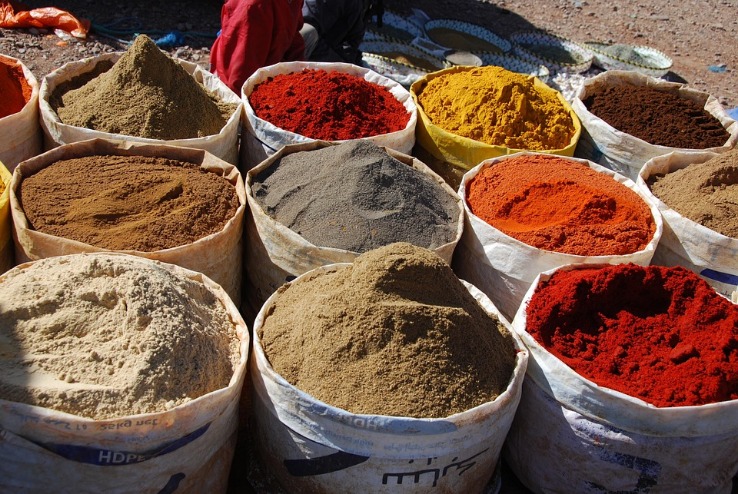
Amazigh languages, including Tarifit, Tamazight, and Tachelhit, are indigenous to Morocco and have experienced a resurgence in recent years. Recognized as an official language alongside Arabic, Amazigh languages are vital to preserving traditional stories, oral poetry, and cultural practices. They contribute significantly to Morocco’s diverse literary landscape, offering unique perspectives and expressions rooted in Berber history and customs.
The coexistence and interaction of Arabic and Amazigh languages foster a distinct Moroccan cultural identity characterized by multilingualism and a vibrant literary scene. Through literature, music, and oral traditions, Morocco continues to celebrate its multilingual heritage, promoting cultural diversity and unity within its society.
French and Spanish Influence
The cultural landscape of Morocco has been profoundly shaped by its rich history and diverse influences, notably from French and Spanish languages. These languages have left a lasting imprint on Moroccan society, especially due to colonial history, trade, and educational systems. French is widely used in business, government, and higher education, serving as a bridge to Europe and the broader Francophone world. Spanish influence is particularly evident in the northern regions and the Sahara, where it remains a common language among local communities and is reflected in regional customs and dialects. The integration of these languages into daily life contributes to Morocco’s unique cultural identity, blending indigenous Berber traditions with European linguistic and cultural influences. This linguistic fusion enriches Moroccan literature, media, and arts, fostering a vibrant multicultural environment that continues to evolve today.
Literary Traditions and Famous Writers
Moroccan culture is a rich tapestry woven from a variety of historical influences, including Arab, Berber, African, and European traditions. Language and literature play a vital role in expressing the diverse identities of the Moroccan people. Arabic is the official language, used widely in both spoken and written forms, while Berber languages are recognized and preserved as part of the country’s heritage. French is also prominent, especially in education, business, and government, reflecting Morocco’s colonial history.
Literary traditions in Morocco are deeply rooted and diverse, ranging from classical poetry and storytelling to modern novels and academic works. Historically, Moroccan writers have used literature as a means to explore social issues, preserve cultural identity, and connect with the spiritual realm. Prominent figures include Mohamed Choukri, known for his autobiographical novels that depict life in marginalized communities, and Tahar Ben Jelloun, whose works often examine themes of identity, exile, and social justice. These writers have gained international recognition, contributing significantly to the global literary scene.
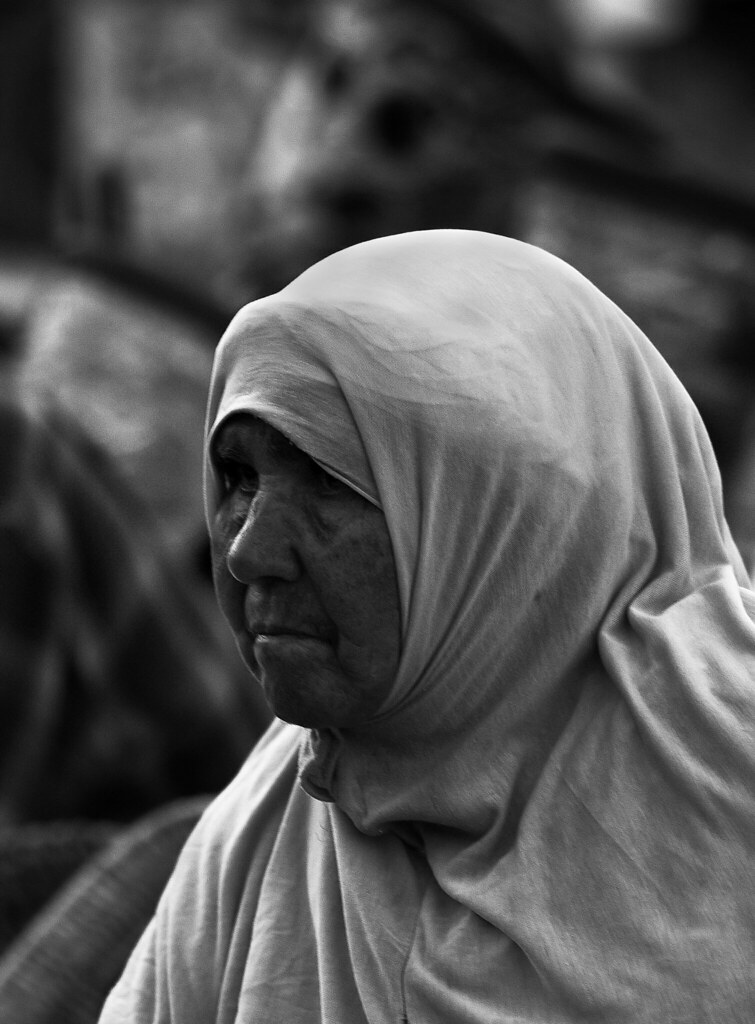
Cuisine and Food Culture
Moroccan cuisine is a vibrant reflection of the country’s rich cultural heritage, blending influences from Arab, Berber, Mediterranean, and Sub-Saharan traditions. Food in Morocco is more than sustenance; it is a vital aspect of social life, hospitality, and celebration. From aromatic spices to intricate preparation methods, Moroccan food offers a sensory journey that showcases the nation’s diverse and storied history.
Staple Ingredients and Dishes
Moroccan cuisine is a vibrant reflection of its rich cultural heritage, blending Arab, Berber, Andalusian, and Mediterranean influences. Food plays a central role in social and family gatherings, emphasizing hospitality and community. Traditional dishes often feature a harmonious combination of spices and ingredients that have been passed down through generations, creating a distinctive and flavorful culinary experience.
Staple ingredients in Moroccan cuisine include couscous, a versatile dish made from steamed tiny semolina granules, and preserved lemons, which add a unique tang to many recipes. Other key ingredients are olives, garlic, onions, saffron, cumin, and coriander. These elements are used to flavor a variety of dishes, from hearty stews to aromatic soups.
Popular dishes that showcase Moroccan culinary traditions include tagine, a slow-cooked savory stew named after the earthenware pot it’s cooked in, often containing meat, vegetables, and dried fruits. Another beloved dish is pastilla, a pastry filled with savory mixtures of meat and almonds, topped with powdered sugar and cinnamon. Mint tea, known as “Moroccan whisky,” is an iconic beverage enjoyed throughout the day, symbolizing Moroccan hospitality and social bonding.
Popular Culinary Techniques
Moroccan cuisine is a rich and vibrant tapestry influenced by Berber, Arab, Andalusian, and Mediterranean flavors, reflecting the country’s diverse cultural heritage. Traditional dishes often feature spices such as cumin, saffron, and ginger, creating bold and aromatic flavors that are cherished across the nation. Food plays a central role in Moroccan social life, with meals often serving as communal gatherings that strengthen family and community bonds.
Popular culinary techniques in Morocco include slow braising, which is used to prepare stews like tagine, allowing flavors to meld over low heat. Grilling is also prevalent, especially for kebabs and seafood dishes, imparting smoky and charred notes. Additionally, bread baking remains an essential skill, with varieties such as khobz baked in communal ovens. Other techniques like grinding spices with a mortar and pestle and fermenting olives or dairy products showcase the traditional methods passed down through generations. These techniques, combined with local ingredients, create a distinctive and enduring food culture that embodies Morocco’s warm hospitality and historical legacy.
Role of Sharing Meals in Social Life
In Moroccan culture, cuisine and food hold a special significance as a vital expression of identity and tradition. Moroccan dishes are renowned for their rich flavors, aromatic spices, and diverse ingredients, reflecting a blend of Arab, Berber, Mediterranean, and sub-Saharan influences. Staples like couscous, tagines, and harira are not only meal staples but also symbols of hospitality and community. Dining is often a communal activity where families and friends gather to share meals, reinforcing social bonds and cultural ties.
The role of sharing meals in Moroccan social life is deeply rooted in the value placed on hospitality and generosity. It is customary to invite guests and neighbors to join in the meal, emphasizing the importance of community and collective well-being. Traditional gatherings, such as family occasions, religious festivals, and celebrations, revolve around food, serving as a means to foster unity and reinforce social hierarchies. The act of sharing food extends beyond sustenance, functioning as a gesture of warmth, respect, and cultural pride.
Religion and Spirituality
Religion and spirituality play a vital role in shaping the rich cultural fabric of Morocco. As a country influenced by Islamic traditions, along with historical Jewish and Christian communities, Morocco’s spiritual landscape is diverse and deeply intertwined with daily life. These beliefs influence customs, festivals, art, and social practices, reflecting the country’s profound religious heritage and spiritual diversity.
Islamic Practices and Beliefs
Religion and spirituality play a central role in Moroccan culture, deeply shaping the daily lives and practices of its people. Islam is the predominant religion, influencing various aspects of society, from social customs to architecture. Many Moroccans observe daily prayers, fasting during Ramadan, and participate in religious festivals such as Eid al-Fitr and Eid al-Adha, which foster a strong sense of community and spiritual connection. Islamic teachings emphasize charity, morality, and respect for others, which are reflected in the warm hospitality and generosity characteristic of Moroccan culture. Additionally, Islamic architecture, including mosques and decorative tile work, integrates spiritual symbolism and artistic expression, further highlighting the importance of religion in Moroccan life and heritage.
Sufi Influences and Festivals
Religion and spirituality deeply shape the cultural landscape of Morocco, where Islam is the predominant faith. Sufism, a mystical Islamic tradition, has significantly influenced Moroccan spirituality, inspiring numerous practices, teachings, and a rich tradition of Sufi saints and orders. Sufi influence is reflected in the country’s music, poetry, and architecture, creating an ambiance of spiritual devotion that transcends everyday life. Moroccan festivals often blend religious observances with cultural celebrations, allowing communities to express their faith joyfully and collectively.
Among the most prominent religious festivals is Ramadan, observed with fasting, prayer, and communal gatherings. The celebration of Mawlid al-Nabi, marking the birth of the Prophet Muhammad, is another significant event featuring processions, recitations, and communal prayers. Sufi festivals, such as the Urs celebrations dedicated to revered Sufi saints, are vibrant occasions filled with music, dance, and spiritual ceremonies. These festivals not only serve as religious observances but also as important cultural events that reinforce community bonds and preserve Morocco’s rich spiritual heritage.
Jewish and Christian Heritage
Morocco’s rich cultural landscape is deeply influenced by its diverse religious and spiritual heritage, particularly from Jewish and Christian communities alongside Islam. These religious traditions have shaped the nation’s history, architecture, and social practices, creating a vibrant mosaic of beliefs and customs. Jewish heritage in Morocco is evident in centuries-old synagogues, cemeteries, and festivals that celebrate the enduring presence of Jewish communities. Christian influences, although less prominent, can be seen in historical churches and the cultural exchanges that have occurred over centuries. Together, these religious traditions contribute to Morocco’s unique cultural identity, fostering a sense of coexistence and mutual respect that continues to define the country’s social fabric.
Clothing and Fashion
Clothing and fashion in Morocco reflect a rich blend of tradition and modernity, shaped by the country’s diverse cultural heritage. From intricate traditional garments to contemporary styles, Moroccan fashion showcases a unique fusion of Arab, Berber, and African influences. Exploring these garments offers insight into the vibrant history and cultural identity of Morocco, highlighting how fashion remains an important means of self-expression and cultural pride.
Traditional Attire (Caftan, Djellaba)
Clothing and fashion in Morocco are deeply rooted in the country’s rich cultural heritage, reflecting a blend of tradition, history, and creativity. Traditional attire such as the caftan and djellaba hold a special place in Moroccan culture, symbolizing elegance and identity. The caftan is a long, flowing garment often adorned with intricate embroidery and vibrant colors, worn during special occasions such as weddings and celebrations. It showcases the artisans’ craftsmanship and regional influences, embodying both modesty and beauty. The djellaba, on the other hand, is a loose, hooded robe that provides comfort and practicality while maintaining a sense of tradition. Often made from wool or cotton, it is worn by both men and women and varies in style based on the region and occasion. These traditional garments are more than just clothing; they are expressions of cultural pride and historical continuity, embodying Morocco’s diverse and vibrant cultural landscape.
Modern Fashion Trends
Clothing and fashion in Morocco are deeply rooted in the country’s rich cultural heritage, blending traditional elements with modern trends to create a unique style. Modern fashion trends in Morocco showcase a mix of vibrant colors, intricate embroidery, and innovative designs that reflect both historical influences and contemporary tastes. Young Moroccans often incorporate Western fashion with traditional garments like the djellaba and kaftan, adapting them to suit modern aesthetics. Sustainable and local brands are gaining popularity, emphasizing craftsmanship and cultural identity. Overall, Moroccan fashion continues to evolve, celebrating its cultural diversity while embracing global fashion movements.
Textile and Craftsmanship Significance
Clothing and fashion in Morocco hold a profound significance as they embody the rich cultural heritage and identity of the Moroccan people. Traditional garments such as the caftan, djellaba, and kaftan reflect centuries of history, artistry, and regional diversity, serving not only as everyday wear but also as symbols of social status, celebration, and cultural pride. The intricate craftsmanship involved in creating these textiles showcases the expertise of local artisans who employ techniques like embroidery, weaving, and embroidery to produce vibrant and meaningful designs.
The textile arts are deeply intertwined with Morocco’s cultural expressions, from colorful pottery to elaborate jewelry, emphasizing the importance of craftsmanship in preserving and transmitting cultural values through generations. These textiles often feature motifs inspired by Islamic art, Berber culture, and natural elements, highlighting the country’s diverse heritage. The significance of clothing and textiles extends beyond aesthetic appeal, acting as a form of storytelling and a reflection of Morocco’s historical interactions, regional customs, and artistic ingenuity.
Modern Cultural Dynamics
Modern cultural dynamics in Morocco reflect a vibrant blend of traditional heritage and contemporary influences. As the country navigates globalization and technological advancements, Moroccan society experiences shifts in artistic expression, social norms, and cultural identities. This evolving landscape showcases how history, religion, and modernity coexist to shape the nation’s unique cultural fabric.
Urban vs. Rural Cultural Expressions
In Morocco, the cultural landscape vividly illustrates the contrasts and interactions between urban and rural expressions. Urban areas such as Casablanca and Marrakech serve as vibrant hubs of modernity, where traditional Moroccan culture intertwines with contemporary influences from around the world. These cities showcase diverse art scenes, modern architecture, international cuisine, and a cosmopolitan lifestyle that reflects globalization’s impact. Conversely, rural regions maintain strong ties to traditional practices, preserving age-old crafts, music, dance, and social customs that have been passed down through generations. These areas often emphasize community-centered rituals, local dialects, and a profound connection to the land and heritage. The dynamic between urban and rural cultural expressions in Morocco highlights a rich tapestry of identity, balancing innovation with tradition and shaping a unique national character that continues to evolve.
Influence of Globalization
Modern cultural dynamics in Morocco are significantly shaped by the influence of globalization, which has facilitated the exchange of ideas, traditions, and expressions across borders. This interconnectedness has led to a blending of indigenous Berber, Arab, and African cultures with global trends, creating a vibrant and evolving cultural landscape.
- The Moroccan language landscape has expanded beyond traditional Arabic and Berber to include English, French, and Spanish, driven by economic and educational globalization.
- Music and fashion in Morocco now incorporate international styles, while still maintaining their unique local characteristics such as Gnawa music and traditional dress like caftans.
- Global media and internet access have introduced Moroccan society to diverse cultural content, influencing youth, art, and entertainment industries.
- Cuisine has also been affected, with international flavors blending into traditional Moroccan dishes, promoting a dynamic culinary scene.
- Despite these influences, Morocco continues to preserve its rich cultural heritage, balancing modernization with tradition to create a unique cultural identity in the global era.
Contemporary Arts and Media
Cultural dynamics in Morocco are shaped by a rich tapestry of history, tradition, and modern influences, reflecting a unique blend of Arab, Berber, African, and European elements. Contemporary arts and media play a vital role in expressing this diversity, serving as platforms for innovation and cultural dialogue. Moroccan artists often explore themes related to identity, social change, and heritage, utilizing various mediums such as painting, music, and digital art to communicate their perspectives. The media landscape in Morocco is increasingly dynamic, fostering a space for contemporary cultural debates and showcasing Moroccan artistry to a global audience. This ongoing interaction between tradition and modernity creates a vibrant cultural scene that continues to evolve, resonating with both local and international audiences.

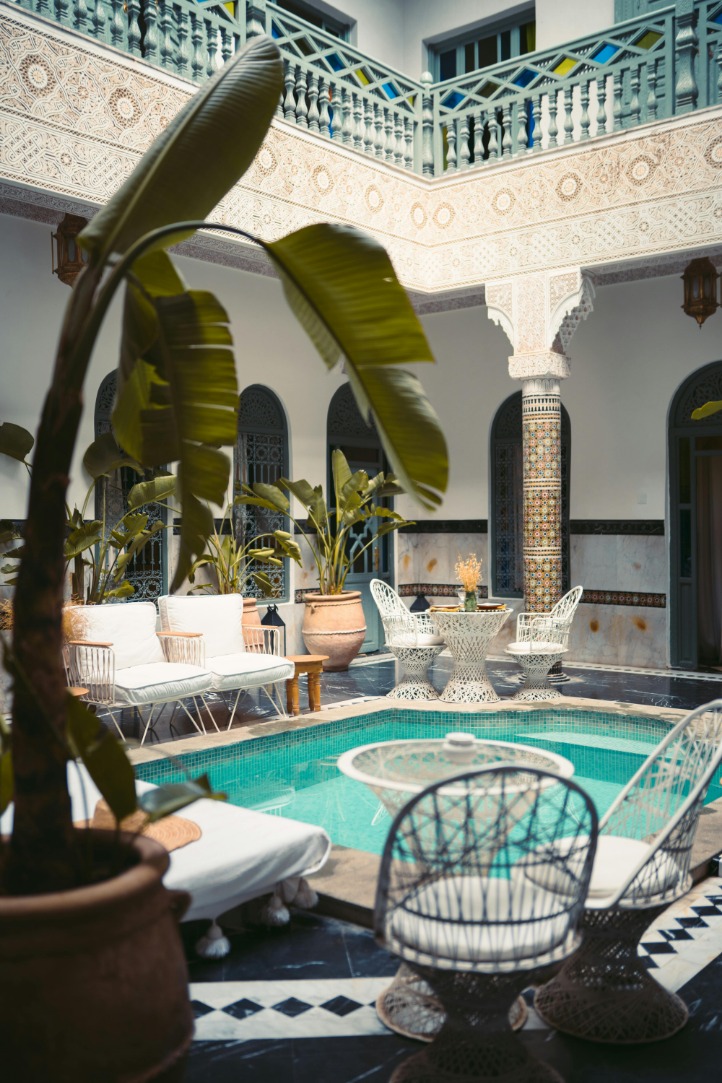
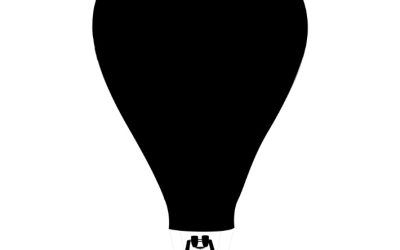
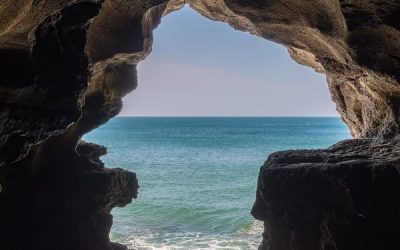
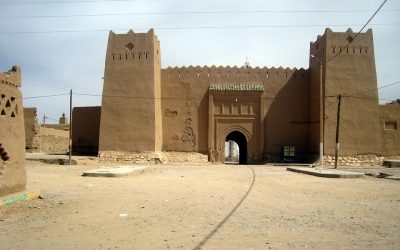
0 Comments